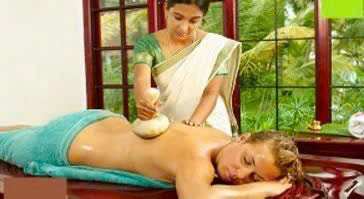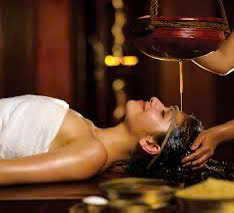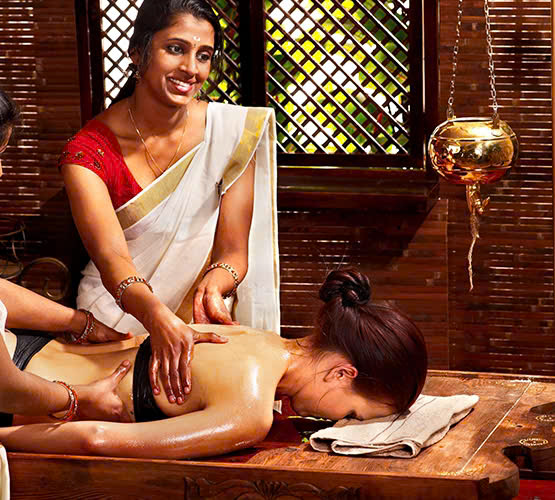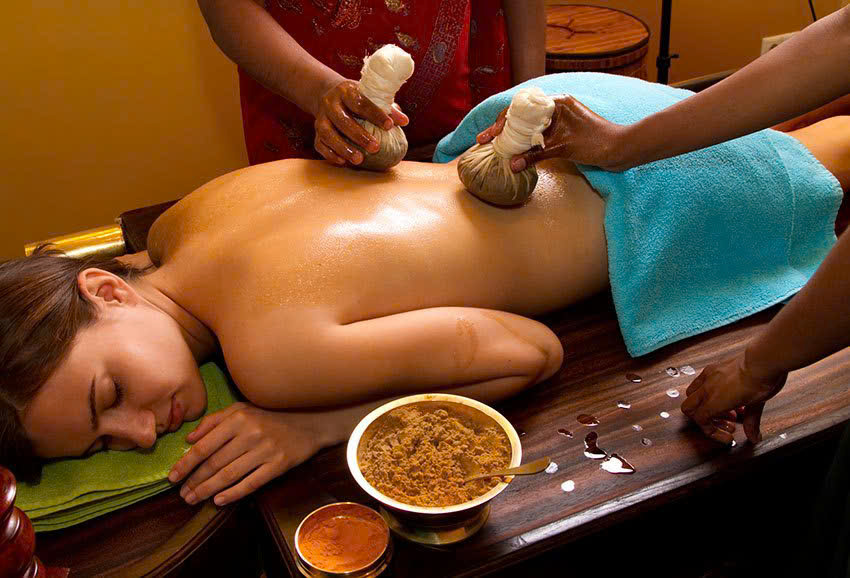Ayurvedic Massage: discover top 10 Unique Healing Benefits & Techniques
Ayurvedic massage is an ancient holistic healing practice originating from India, blending therapeutic touch with deep spiritual and physical wellness principles. It’s more than just a relaxation technique; it aims to balance the body’s energies, improve health, and promote mental clarity. In this comprehensive guide, we will explore what is ayurvedic massage, what makes it unique, how it differs from other massage styles, its profound healing benefits, and everything else you need to know about this traditional art.

Ayurvedic Massage
Ayurvedic massage stands at the intersection of traditional Indian medicine and manual therapy, emphasizing a personalized approach based on individual constitution or dosha. Rooted in Ayurveda, which translates to “science of life,” this practice considers the body, mind, and spirit as interconnected entities that require harmony for optimal health.
Unlike typical massages focused solely on muscle relaxation, Ayurvedic massage integrates herbal oils, specific techniques, and targeted pressure points designed to detoxify, energize, and restore balance to each individual’s unique energy system. It is often used as a preventative health measure and a complementary treatment for various ailments.
This form of massage is not just about physical touch; it is an experiential journey into self-awareness and healing. It encourages practitioners and recipients alike to connect deeply with their bodily sensations, emotional states, and mental clarity. Often performed by trained therapists familiar with Ayurvedic principles, the massage aims to re-establish the body’s natural flow of energy (prana), promoting overall well-being.
The Essence of Ayurvedic Principles in Massage
At its core, Ayurvedic massage is rooted in the understanding of doshas: Vata, Pitta, and Kapha. Each person has a unique constitution comprising a combination of these three energies, which govern bodily functions, temperament, and health. An Ayurvedic massage session is typically tailored according to the client’s dosha type, ensuring that the therapy targets specific imbalances.
Furthermore, Ayurveda emphasizes the importance of marma points, which are vital energy points similar to acupressure points in Chinese medicine. The stimulation of these points through massage can activate healing pathways and restore energetic harmony.
Incorporating herbal oils infused with medicinal herbs further enhances the effects of the massage, allowing for detoxification, improved circulation, and nourishment of tissues. These oils are selected based on the individual’s needs and doshic imbalances, making Ayurvedic massage highly personalized and effective.

What is ayurvedic massage
Understanding what is ayurvedic massage involves exploring its philosophy, techniques, ingredients, and goals. This practice combines precise manual manipulations with herbal formulations to promote physical health, mental tranquility, and spiritual alignment.
What is ayurvedic massage? It is a comprehensive therapy that uses specialized oils, rhythmic strokes, and targeted pressure to stimulate the body’s internal systems. Unlike generic massage styles, this method aims to harmonize the body’s energies, clear blockages, and facilitate detoxification through lymphatic drainage and improved blood flow.
The procedure generally begins with an assessment of the individual’s prakriti (constitution) and vikriti (imbalance). Based on this, the therapist selects appropriate oils, techniques, and sequences. The massage may involve long sweeping strokes, deep tissue work, gentle kneading, and tapping — all tailored to the client’s specific needs.
One distinctive aspect of what is ayurvedic massage is the use of warm herbal oils applied rhythmically to the body, sometimes accompanied by heated poultices or herbal compresses. This not only relaxes muscles but also allows medicinal properties to penetrate deeper tissues, providing enhanced healing effects.
What sets it apart from other massage practices is its focus on balancing doshas and restoring the flow of prana, rather than merely relieving tension. The holistic approach addresses emotional and mental well-being, recognizing that physical health is intrinsically linked to spiritual harmony.
The Role of Practitioner Skill and Personalization
A key factor in what is ayurvedic massage is the expertise of the practitioner. Knowledge of Ayurvedic anatomy, pathology, and herbal medicine is essential to craft a treatment that aligns with the client’s constitution and current condition.
Personalization is central; no two sessions are identical. An Ayurvedic therapist assesses the client’s health history, lifestyle, and current stressors before designing a sequence of movements and herbal applications. This individualized care maximizes the therapeutic potential of the massage.
Moreover, what is ayurvedic massage often incorporates meditative breathing and mindfulness techniques, making the experience deeply restorative. It becomes a journey inward, fostering inner peace alongside physical healing.
What is special from ayurvedic massage
What is special from ayurvedic massage lies in its integrative approach, cultural richness, and personalized nature. It is not merely a physical treatment but a holistic system that nurtures the entire being.
Integration of Herbal Medicine and Manual Therapy
One of the hallmarks of what is special from ayurvedic massage is the synergy between herbal medicine and manual manipulation. The selection of oils infused with herbs like turmeric, neem, Ashwagandha, and Brahmi makes the therapy profoundly therapeutic.
These herbal oils are believed to possess antimicrobial, anti-inflammatory, and rejuvenating properties, which are absorbed through the skin during massage. The therapeutic effects extend beyond relaxation to include immune boosting, detoxification, and hormonal regulation.
This integration offers a multi-layered healing process, where physical, emotional, and energetic dimensions are simultaneously addressed. It elevates the massage from mere relaxation to a potent health intervention rooted in centuries of tradition.

Emphasis on Individualized Treatment
Unlike mass-market massages that follow a standardized protocol, what is special from ayurvedic massage is its highly personalized framework. Every individual’s prakriti and vikriti determine the specific oils, techniques, and areas of focus.
For example, a Vata-dominant person might receive gentle, warming strokes combined with grounding herbal oils, while a Pitta type might benefit from cooling, calming massage techniques. This customization optimizes therapeutic outcomes and supports long-term health maintenance.
Additionally, Ayurvedic massage often includes lifestyle and dietary recommendations, making it a comprehensive wellness package rather than a standalone treatment. Its focus on prevention and balancing energies sets it apart from purely symptomatic therapies.
Spiritual and Emotional Dimensions
Another extraordinary aspect is the spiritual component. Many practitioners view Ayurvedic massage as a spiritual practice that fosters mindfulness, self-awareness, and inner harmony. The rhythmical strokes and herbal aroma create a sensory environment conducive to meditation and emotional release.
What is special from ayurvedic massage is its capacity to facilitate emotional cleansing and mental clarity, aligning physical healing with spiritual growth. This dimension transforms massage from a simple physical therapy into a sacred ritual of self-care.
Why is it difference from other massage styles
Why is it different from other massage styles? The distinction arises from its philosophical foundation, technical specificity, herbal integration, and holistic focus. Let’s delve into these differences:
Philosophical Foundations: Ayurveda vs. Western Massage
Most Western massage techniques, such as Swedish or deep tissue massage, primarily target muscle tension, circulation, and pain relief. They often lack a comprehensive framework that considers energy flow, constitutional types, or spiritual well-being.
In contrast, why is it different from other massage styles is because Ayurvedic massage is grounded in Ayurveda’s holistic philosophy. It views the body as an integrated system of energy, elements, and consciousness. Treatments are tailored not just to symptoms but to a person’s overall constitution, aiming for balance at all levels.
Techniques and Tools Used
While many massage styles employ similar strokes—effleurage, petrissage, tapotement—why is it different from other massage styles lies in the specific techniques and tools unique to Ayurveda. These include:
- Use of warm herbal oils
- Application of marma point stimulation
- Incorporation of herbal compresses
- Specific sequences designed to balance doshas
These methods are complemented by breathing exercises and meditative pauses, which enhance the healing process.
Herbal and Aromatic Elements
Many massages focus on physical touch alone, but Ayurvedic massage uniquely incorporates aromatic herbal oils tailored to the individual. The therapeutic properties of these oils contribute significantly to the treatment’s distinctiveness.
Herbal infusions help detoxify tissues, boost immunity, and improve skin health, setting Ayurvedic massage apart from conventional modalities that may not utilize medicinal plant-based products.
Focus on Prevention and Long-term Balance
While other massage styles often target immediate relief, why is it different from other massage styles stems from its emphasis on prevention, longevity, and maintaining energetic harmony. Preventative care is woven into every session, encouraging lifestyle modifications and routine practices that support ongoing health.
The healing benefits of ayurvedic massage
The healing benefits of ayurvedic massage are extensive, spanning physical, emotional, mental, and spiritual domains. Its application can address a variety of health issues, promote relaxation, and support overall vitality.
Physical Health Benefits
On a physical level, Ayurvedic massage improves circulation, lymphatic drainage, and tissue nourishment. The use of herbal oils enhances skin health, relieves muscular tension, and promotes detoxification.
Some notable physical benefits include:
- Relief from chronic pain conditions like arthritis and backaches
- Improved flexibility and joint mobility
- Strengthened immune system response
- Enhanced digestion and metabolic function
- Reduction in inflammation and swelling
Mental and Emotional Benefits
Beyond the physical, this massage style profoundly impacts mental health. The calm, rhythmic strokes and aromatic oils induce deep relaxation, reduce anxiety, and alleviate symptoms of depression.
It helps clear mental fog, enhances concentration, and cultivates emotional resilience. Often, clients report feeling more centered and emotionally balanced after sessions, highlighting its role in mental health care.
Spiritual and Energetic Benefits
From a spiritual perspective, the healing benefits of ayurvedic massage extend into energetic realms. Stimulating marma points and balancing prana can unblock energetic pathways, leading to increased vitality and spiritual awareness.
Regular practice can foster self-awareness, inner peace, and a heightened connection to one’s true self. This holistic effect supports lifelong well-being and resilience against stressors.
Therapeutic Applications and Evidence
Contemporary research increasingly recognizes the efficacy of Ayurvedic massage. Studies show reductions in cortisol levels, improvements in sleep quality, and enhancements in mood following treatments. Its versatility makes it suitable as a complementary therapy for conditions like anxiety, fibromyalgia, and chronic fatigue.

Everything you need to know about ayurvedic massage
To truly appreciate and benefit from ayurvedic massage, it’s important to understand its practical aspects, preparation, and considerations.
Preparation and Expectations
Before your first session, it’s advisable to discuss your health history and any specific concerns with your therapist. Wearing comfortable clothing and arriving with an open mind enhances the experience.
Expect a deeply relaxing session where the therapist assesses your constitution, applies warm herbal oils, and performs rhythmic strokes tailored to your needs. Post-massage, hydration and rest maximize benefits.
Choosing the Right Therapist
Look for trained Ayurvedic practitioners certified in Ayurvedic massage techniques. Their knowledge of herbs, energy meridians, and individual constitution ensures safe and effective treatment.
Personal rapport and trust are vital since the therapy involves vulnerability and openness. A good therapist will customize the session, explain procedures, and offer lifestyle advice.
Contraindications and Precautions
While generally safe, Ayurvedic massage may not be suitable for everyone. Pregnant women, individuals with infectious diseases, severe skin conditions, or recent surgeries should consult their healthcare provider beforehand.
Adverse reactions are rare but may include skin irritation or allergic responses to herbal oils. Always inform your therapist of allergies or sensitivities.
Integrating Ayurveda into Wellness Routines
Incorporate Ayurvedic principles into daily life through diet, herbal supplements, yoga, and meditation. Regular self-massage using herbal oils (abhyanga) can amplify benefits, foster self-care, and maintain energetic balance.
Ayurvedic Massage
Ayurvedic massage is a deeply therapeutic practice grounded in the principles of Ayurveda, one of the oldest systems of medicine originating from India over 5,000 years ago. This ancient healing system emphasizes balance within the body, mind, and spirit, aiming to cultivate overall well-being through individualized care.
Historical Context of Ayurveda
Understanding ayurvedic massage necessitates grasping the historical context of Ayurveda itself. Rooted in the Sanskrit words “Ayus” (life) and “Veda” (knowledge), Ayurveda encourages a comprehensive approach to health that encompasses diet, lifestyle, herbal remedies, and spiritual practices.
The texts of Ayurveda were penned by sages who sought to understand the nature of life, health, and disease. This rich history informs the methods used in ayurvedic massage, which are tailored to each individual’s unique constitution or prakriti. Knowledge of one’s dosha (vata, pitta, kapha) facilitates personalized treatments that promote harmony and balance.
Core Principles of Ayurvedic Massage
At its core, ayurvedic massage aims to harmonize the body’s energies while enhancing physical and emotional health. Fundamental Ayurvedic concepts such as doshas, agni (digestive fire), and ama (toxins) play crucial roles in guiding therapeutic approaches.
- Doshas: Each person has a unique combination of the three doshas—vata (air), pitta (fire), and kapha (earth). Understanding one’s doshic balance helps tailor the massage oils, techniques, and sequences best suited to restore equilibrium.
- Agni: The concept of digestive fire extends beyond the physical realm; it embodies mental clarity and emotional resilience. An effective ayurvedic massage enhances agni, promoting digestion not only of food but also of experiences and emotions.
- Ama: Toxins accumulate when there is an imbalance or poor digestion. Ayurvedic massage employs specific strokes and herbal treatments to help eliminate ama, facilitating detoxification and rejuvenation.
Types of Ayurvedic Massage
Various forms of ayurvedic massage exist, each with distinct techniques and purposes. Some popular types include:
- Abhyanga: A full-body oil massage using warm herbal oils tailored to the individual dosha, focusing on balancing energy flow and promoting circulation.
- Marma Therapy: Involves stimulating vital points on the body known as marma points. This technique enhances energy flow and can alleviate various ailments.
- Shirodhara: A relaxing treatment where warm oil is poured over the forehead, calming the mind and promoting deep relaxation.
Each type addresses different aspects of health, illustrating the versatility and depth of ayurvedic massage practices.
What is Ayurvedic Massage
What is ayurvedic massage? At its essence, it is a holistic therapy designed to balance the body’s energies, enhance mental clarity, and foster emotional stability. It utilizes warm herbal oils, rhythmic strokes, and targeted techniques to address individual needs comprehensively.
The Process of Ayurvedic Massage
When you arrive for an ayurvedic massage session, expect a personalized experience. Initially, the practitioner will assess your dosha, health conditions, and personal concerns through a consultation. This step ensures that the treatment plan caters specifically to you.
Once this assessment is complete, the session typically begins with a warm oil application. The therapist uses traditional strokes tailored to your constitution, aiming to release tension, improve circulation, and enhance muscular flexibility.
The use of warm, herb-infused oils serves dual purposes: nourishing the skin and harnessing the healing properties of the herbs. Some common oils include sesame, coconut, or almond oil, each selected based on individual requirements.
Duration and Frequency of Sessions
Ayurvedic massage sessions usually last between 60 to 90 minutes, allowing ample time for deep relaxation and thorough treatment. Over time, clients may choose to integrate regular sessions into their wellness routines, ranging from weekly to monthly treatments, depending on their goals.
For those seeking specific therapeutic outcomes, practitioners might recommend a series of sessions accompanied by lifestyle modifications. Consistency often amplifies benefits and fosters greater long-term health.
Aftercare Considerations
Post-massage care is just as significant as the massage itself. Practitioners may advise clients to hydrate adequately and avoid strenuous activities immediately after the treatment. Allowing time for rest enables the body to absorb the therapeutic effects fully.
In some cases, practitioners may provide dietary recommendations or suggest incorporating self-massage rituals at home to prolong the benefits of ayurvedic massage.
What is Special from Ayurvedic Massage
The uniqueness of ayurvedic massage lies in its integrative approach to wellness, which encompasses not just the physical, but also the emotional and spiritual dimensions of health.
Holistic Approach to Wellness
Unlike conventional massage therapies that primarily focus on physical muscle relief, what is special from ayurvedic massage is its holistic perspective. It recognizes the interconnectedness of the body, mind, and spirit, ensuring that treatment extends beyond mere symptom management.
This comprehensive methodology allows therapists to address underlying issues rather than just surface-level discomfort. By exploring every aspect of an individual’s health, a more profound transformation is possible.
Customization and Personalization
Personalization is a hallmark of ayurvedic massage. Treatments are customized according to an individual’s constitution, presenting a unique experience for each client. This customization includes selecting appropriate oils, techniques, and even the ambiance of the treatment space.
No two individuals have identical needs; therefore, ayurvedic massage is tailored to ensure maximum effectiveness. This level of personalization cultivates trust and comfort, creating a safe environment for healing.
Emphasis on Energy Flow and Balance
Another feature that makes ayurvedic massage stand out is its emphasis on energy flow and balance. Utilizing marma points, the therapist stimulates vital energy pathways, ensuring that prana (life force) flows unimpeded throughout the body.
This method contrasts sharply with other modalities that often overlook energetic components in favor of physical manipulation alone. By aligning the energetic centers of the body, ayurvedic massage promotes harmony and supports holistic health.
Incorporation of Mindfulness Practices
Mindfulness and meditation are integral parts of ayurvedic massage. Therapists often incorporate breathing exercises and meditative pauses during the treatment, enhancing relaxation and facilitating a deeper connection to oneself.
These practices serve to calm the mind, allowing clients to achieve a state of serenity and introspection. This mindfulness aspect adds another layer of richness to the experience, setting ayurvedic massage apart from other styles.
Why is it Different from Other Massage Styles
When comparing ayurvedic massage to other massage styles, several distinctive factors come into play. From philosophical foundations to practical applications, the differences are significant.
Philosophical Foundations
As mentioned earlier, why is it different from other massage styles stems from its roots in Ayurveda’s holistic philosophy. Unlike other practices that may solely focus on muscle tension or relaxation, Ayurvedic principles prioritize achieving balance across all levels of existence—physical, mental, and spiritual.
This foundational philosophy shapes treatment methodologies, emphasizing prevention and long-term wellness rather than short-term relief. It encourages practitioners to view the body as an integrated system, acknowledging emotional and spiritual dynamics alongside physical ones.
Treatment Techniques and Modalities
While conventional massages may utilize a variety of strokes, ayurvedic massage incorporates additional modalities rooted in ancient traditions. Techniques like warm herbal oil application, marma point stimulation, and herbal compresses provide a multifaceted approach to healing.
Furthermore, the sequencing of movements in ayurvedic massage is unique. It follows established guidelines designed to promote doshic balance, something that many other styles lack.
Integration of Herbal Remedies
Most massage styles do not typically employ herbal elements, whereas herbal oils are central to the healing benefits of ayurvedic massage. The infusion of medicinal plants into the treatment process enhances not only the sensory experience but also contributes significantly to therapeutic outcomes.
Herbal preparations can address a range of issues from pain relief to anti-inflammatory benefits, imbuing ayurvedic massage with a depth that is often absent in other modalities.
Long-term Health Perspective
Other massage styles frequently aim for immediate results, such as muscle relaxation or pain alleviation. In contrast, why is it different from other massage styles is evident in its approach to long-term health and wellness.
Ayurvedic massage encourages prevention and proactive care, integrating recommendations for lifestyle changes, dietary adjustments, and self-care practices. This holistic perspective fosters ongoing health and empowers individuals to take ownership of their well-being.
The Healing Benefits of Ayurvedic Massage
The healing benefits of ayurvedic massage extend far beyond what one might encounter in conventional therapies. This practice offers a multitude of advantages that encompass the body, mind, and spirit.
Physical Benefits
From a physical standpoint, ayurvedic massage is excellent for improving muscle tone, circulation, and detoxification. The application of warm herbal oils creates a soothing effect on the muscles while promoting blood flow.
Specific benefits include:
- Chronic Pain Relief: Individuals suffering from chronic pain conditions such as arthritis, fibromyalgia, or lower back pain may find substantial relief through regular ayurvedic massage sessions. The combined effects of warmth, herbal properties, and skillful manipulation work to alleviate pain and discomfort.
- Enhanced Flexibility and Mobility: The rhythmic strokes and stretches employed in ayurvedic massage encourage joint movement and muscle flexibility, making it particularly beneficial for athletes or those recovering from injury.
- Detoxification: The detoxifying nature of the oils and techniques used in ayurvedic massage aids in flushing out toxins, promoting a healthier, more vibrant physique.
Emotional and Mental Well-being
Beyond physicality, the impact of ayurvedic massage on emotional and mental health is remarkable. Clients often report feelings of calmness, reduced anxiety, and enhanced mood.
- Stress Reduction: The gentle, rhythmic motions coupled with aromatic oils create a tranquil environment conducive to relaxation. This leads to decreased cortisol levels and reduced stress, allowing individuals to unwind and recharge.
- Emotional Clarity: Many find that ayurvedic massage helps clear mental fog and promotes emotional resilience. Participants often gain insights into themselves, leading to greater self-awareness and emotional balance.
Spiritual Growth and Energetic Alignment
On a spiritual level, the healing benefits of ayurvedic massage are equally profound. The treatment fosters a connection to one’s inner self, enhancing spiritual growth and awareness.
- Energetic Harmony: By focusing on prana and utilizing marma point stimulation, ayurvedic massage works to align and unblock energy pathways. This energetic flow translates to heightened vitality and a sense of connectedness to the universe.
- Meditative State: The inclusion of mindfulness practices during the session encourages a meditative state, promoting peace and clarity. This aspect often leads to transformative experiences, where clients feel more attuned to their authentic selves.
Holistic Healing Applications
More and more contemporary studies reveal the efficacy of ayurvedic massage in addressing various health conditions. Evidence supports its use as a complementary therapy for anxiety, insomnia, fibromyalgia, and chronic fatigue syndrome, highlighting its versatility and healing capabilities.
Everything You Need to Know About Ayurvedic Massage
To make the most of ayurvedic massage, understanding its nuances, preparation, and overall considerations is essential. Here’s everything you need to know to ensure a fulfilling experience.
Preparation for Your Session
Prior to your first ayurvedic massage, it’s wise to prepare both physically and mentally. Engage in open communication with your therapist, discussing any health concerns or specific areas that require attention.
Wear comfortable clothing, preferably breathable materials, to enhance comfort during the session. Arriving with an open mind invites ease and receptiveness to the process.
Selecting the Right Practitioner
Choosing the right therapist is critical for receiving an effective ayurvedic massage. Seek practitioners who are certified and trained in Ayurvedic methods, ensuring they possess the necessary knowledge about individual constitutions and herbal applications.
Trust is paramount, as this treatment often involves vulnerability. Establish rapport with your therapist, as this fosters a more profound healing experience.
Understanding Contraindications
Though generally safe, ayurvedic massage may not be suitable for everyone. Pregnant women, those with serious skin conditions, and individuals recovering from surgeries should consult healthcare providers before proceeding.
Always disclose any allergies or sensitivities to your therapist to avoid adverse reactions, ensuring a safe and pleasant experience.
Integrating Ayurveda into Daily Life
To maximize the benefits of ayurvedic massage, consider incorporating Ayurvedic principles into your daily routine. Embrace practices such as yoga, mindful eating, and herbal supplementation to support overall wellness.
Self-massage (abhyanga) with warm oils can extend the benefits of professional treatments, fostering a nurturing connection with your body while helping maintain energetic balance.
Conclusion
In wrapping up our exploration of ayurvedic massage, it becomes clear that this practice is much more than a simple indulgence; it is a holistic healing modality rooted in ancient wisdom. Its unique blend of personalized treatments, herbal applications, and spiritual insights sets it apart in a crowded landscape of massage therapies.https://jobedubaispa.com/aromatherapy-massage-and-hot-oil-massage/https://jobedubaispa.com/aromatherapy-massage-and-hot-oil-massage/
Through the integration of physical touch, energy alignment, and mindfulness practices, ayurvedic massage fosters profound healing on multiple levels. As individuals seek to enhance their overall well-being, this enriching practice offers a pathway to lasting peace, vitality, and balance. By embracing the principles of Ayurveda, we unlock the potential for holistic health, empowering ourselves toward a more harmonious existence.https://www.instagram.com/spa.jobe/
